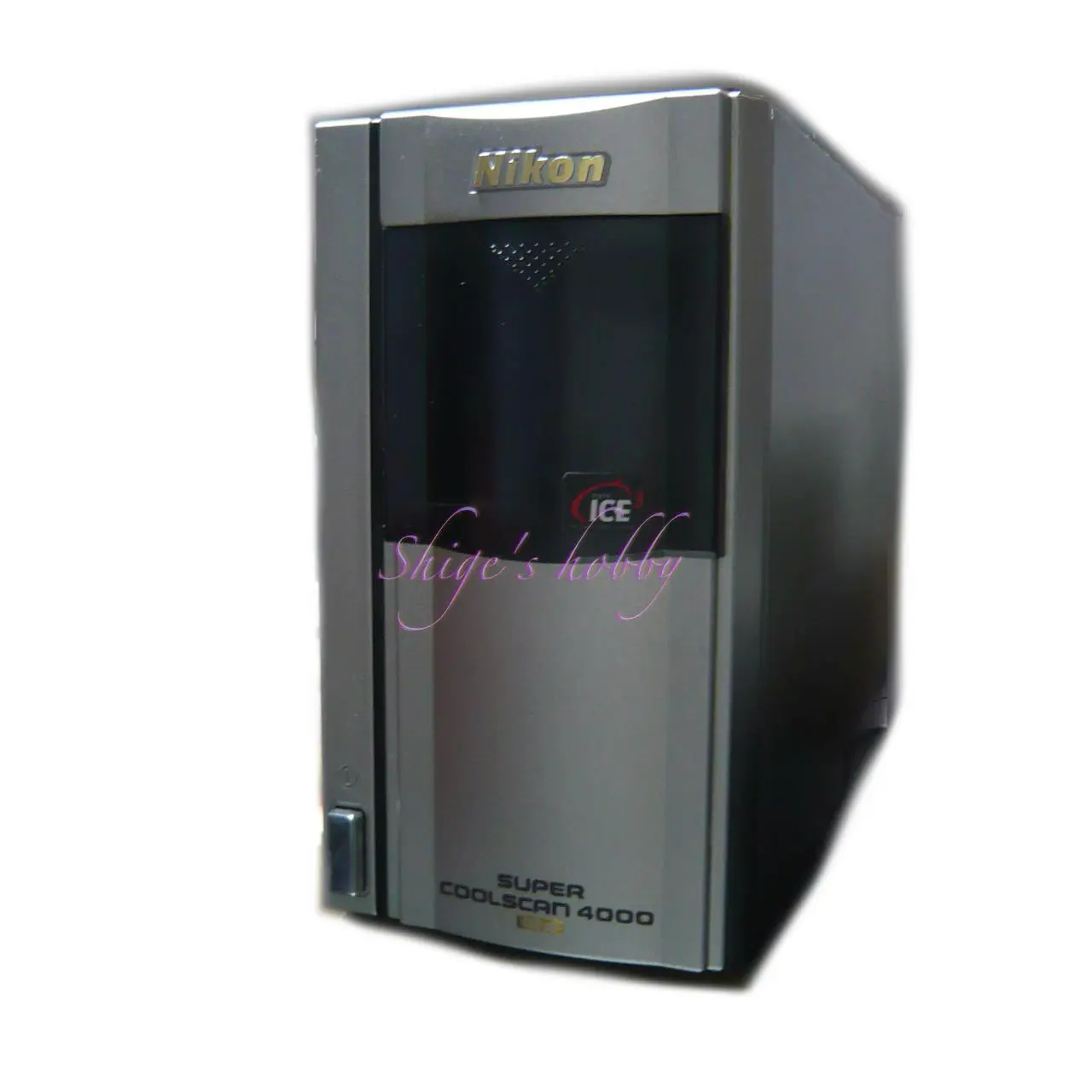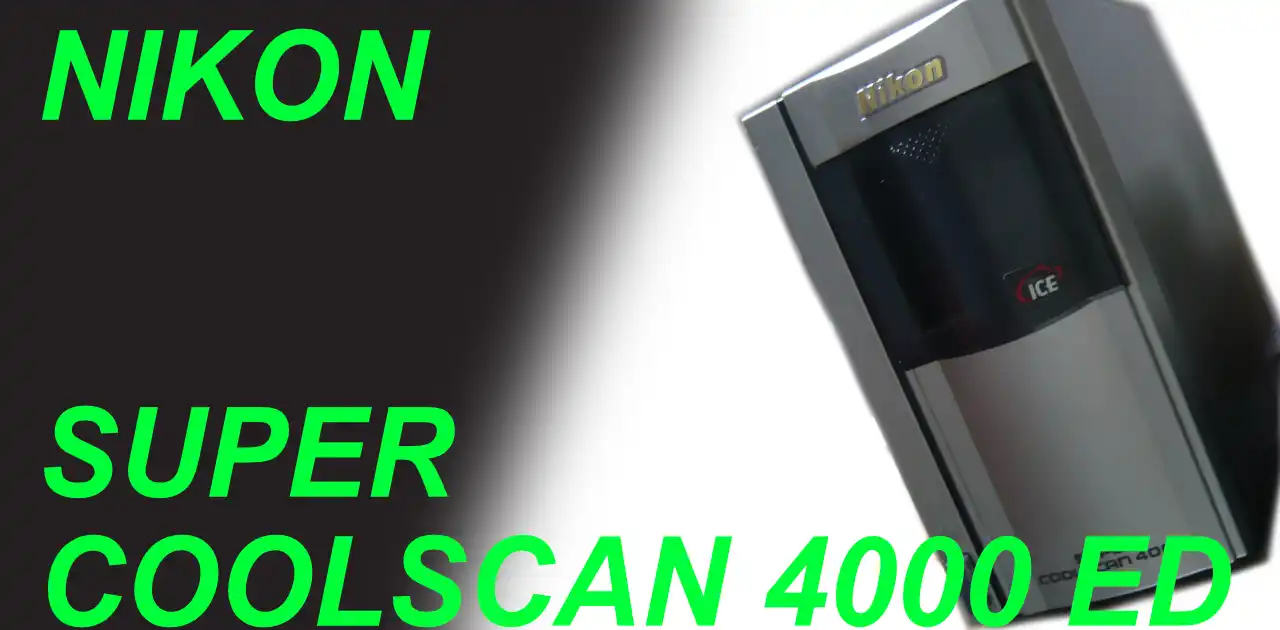Last updated on 2025-10-15
A review of the Super Cool Scan 4000 ED (LS-4000 ED), including its current capabilities, operating environment, and scanning software as of 2024.
- Please see the disclaimer regarding advertising here.
- Italicized links in the text are advertisement links that take you to other sites.
Table of contents
Gallery
- KODAK GOLD200(Negative film)
- LEICA R8
- FISHEYE ELMARIT 16mm
Review


1.Overview
The LS-4000ED (Super Cool Scan 4000 ED) is a 2001 model that supports IEEE1394 connections.
It is one of Nikon’s four-digit model number scanners, with a maximum scanning resolution of 4000 dpi, 14-bit input, and 16-bit output.
The list price was 198,000 yen.
Scanning 35mm film (36.32 x 24.21mm) at 4000 dpi yields an image with a horizontal resolution of 36.32/25.44000=5720 pixels and a vertical resolution of 24.21/25.44000=3812 pixels. Equipped with Digital ICE3™, it can automatically correct dust and scratches on the film.
A unique feature of Nikon scanners is the SA-21 adapter, which automatically accepts slip film. However, an adapter that processes slide film one sheet at a time is included as standard, and if you want to scan multiple slides at once you will need to purchase the optional SF-210 [Slide Feeder] (list price 50,000 yen). There is also an option that allows you to scan uncut long rolls of film.
The scanner has a built-in power supply, so no AC adapter is required.
2.Usability
The power supply of the LS-4000ED (Super CoolScan 4000 ED) failed before I could perform precise speed measurements, so I don’t have the exact figures, but scanning 36 frames at 4000 dpi using VueScan took about 1.5 hours in total. Dividing the total time by 36 frames works out to 150 seconds per frame (2 minutes 30 seconds). In reality, the scan speed per frame is likely a little faster, since it includes the time it takes to change film.
The scan results showed that the maximum scan resolution of 4000 dpi for 35mm film is equivalent to 20 megapixels, which is perfectly fine for normal use.
I used the COOLSCAN 4000 ED and COOLSCAN V, but the specifications are different: the 4000’s light source is a three-color RGB LED, while the V’s is a four-color RGB+Ir LED. Since I don’t have scans of the same film, I can’t make a precise comparison.
A distinctive external feature is that the IV and 4000 have a cover on the film loading section, while the V and 5000 do not. The V and 5000, which omit the cover, have a lid on the insertion section of the MA-21 slide mount adapter.
This means that with the V and 5000, the MA-21 should be attached to the scanner when not in use.
Because of this difference, the model number of the slide mount adapter for the IV and 4000 is MA-20(S).
The case size is the same for the IV, V, 4000, and 5000.
Nikon scanners have slightly weak capacitors in the power supply, and my SUPER COOLSCAN 4000 ED will not turn on due to a faulty capacitor. It seems like I could repair it by finding the faulty capacitor with a capacitance meter (LCR meter) and replacing it, but I haven’t been able to do that yet.
The SUPER COOLSCAN 4000ED only has an IEEE1394 (Apple calls it FireWire) connector, so you’ll need a PC with an IEEE1394 connector. Also, since the Mac’s Thunderbolt connector is compatible with IEEE1394, connection is possible using a Thunderbolt 2 to FireWire adapter (MD464ZMA). Thunderbolt 3 connections are also possible using a Thunderbolt 3 (USB-C) to Thunderbolt 2 adapter, but scanner operation can be unstable.
Apparently, a legacy driver for Windows 8.1 is required to recognize IEEE1394 on a Windows-10 PC. A search online reveals several articles. I haven’t actually tried them, so I can’t say whether they’ll work with the scanner.
If your laptop or other device only has a USB port, you can find inexpensive IEEE1394-to-USB adapters on Amazon, but these are scams that simply connect an IEEE1394 port directly to a USB port and do nothing advanced like signal conversion. Despite the different voltages that IEEE1394 and USB 1.1/2.0 can pass, this direct connection can reportedly damage devices, so don’t bother with these adapters.
IEEE1394 devices require the OS to recognize them as IEEE1394 devices in order to use the included device drivers. Therefore, even if you can convert signals to USB, it’s unlikely you’ll be able to use devices that require dedicated drivers. While devices that operate on USB signals, such as scanners, may work by converting the IEEE1394 signal from the scanner to a USB signal, I’ve never seen a device that converts IEEE1394 signals to USB signals.
In 2002, an NEC subsidiary created an IEEE1394-to-USB conversion chip, but I’ve never seen a product that uses this.
Scanning requires software, and the official scanner software is compatible with Windows 98 SE, Windows 2000 Professional, and Windows Me, and with Mac OS 8.6 and later (support for 9.x and 10.x is unknown).
VueScan, a paid scanning software, is compatible with the latest OS as of 2024.
SilverFast version 9, another paid scanning software, is compatible with Mac OS X 15 and Windows 11.
3.Summary
In conclusion, to sum up the LS-4000ED (Super Cool Scan 4000 ED) is a film scanner that requires an IEEE139/FireWire connection. Connecting via IEEE139/FireWire is a hassle in the 2020s, so the LS-50 and LS-5000ED, which use USB 2.0 connections, are easier to use. However, both scanners are very expensive even second-hand.
Specifications, considerations, etc.
Nikon film scanners come in three main lines: the affordable 3000, 4000, and 5000 high-performance models compatible with 3, 4, 5, and 35mm film + APS film, and the 4500, 8000, and 9000 models capable of scanning large-format film.
The SUPER COOLSCAN 5000 ED is the next generation of the SUPER COOLSCAN 4000 ED.
The difference between these two models is that the 5000ED has an additional IR light source, making it a four-color LED, and has twice the number of sensors, thereby increasing the scanning speed.
I wasn’t aware of it at the time, but comparing the spec sheets, I can see that the scanners are built differently, with Nikon having a fixed document and Konica Minolta having a fixed sensor.
| Name | SUPER COOLSCAN 4000 ED | SUPER COOLSCAN 5000 ED | Dimage Scan Elite 5400 II |
| Model No. | LS-4000 ED | LS-5000 ED | AF-5400-2 |
| Resolution(dpi) | 4000 | 4000 | 5400 |
| number of pixels | 3946×5959 | 3946×5959 | 5328×7920 |
| Image sensor | 1-line linear CCD image sensor | 2-line linear CCD image sensor | 3-line color CCD (5340 pixels per line) RGB primary color filter |
| Light | 3 color LED(RGB) | 4 color LED(RGB Ir) | White LED |
| Scan method | Manuscript Fixation Optics moving flatbed scanning 1-pass scanning | ← | Manuscript Drive Fixed sensor 1-pass scanning method |
| Scan speed | Approx. 38 sec (1 sheet of 35mm film, 4000dpi) | Approx. 20 seconds (1 sheet of 35mm film, using MA-21, 4000 dpi) | Approx. 25 seconds (1 sheet of 35mm positive film, all image corrections OFF) |
| A/D transform | 14bit | ← | 16bit |
| Output | 16bit | ← | 16bit |
| Digital ICE | ICE 3 | ICE 4 | ICE 4 |
| Interface | IEEE1394 | USB 2.0 | ← |
| Auto feed | 6 | ← | ← |
| Slide scan mehtod | Yes 50 sheets can be processed with SF-210 | ← | Yes 4 slides can be attached to the holder |
| Power supply | Include | ← | AC adapter |
| Weight(kg) | 3.0 | 3.0 | 1.5 |
| Options | Strip Film Adapter SA-21 Slide Mount Adapter MA-20(S) Strip Film Holder FH-3 | Strip Film Adapter SA-21 Slide Mount Adapter MA-21 Strip Film Holder FH-3 | 35mm Film Holder FH-M20 Slide Mount Holder SH-M20 AC Adapter AC-U26 |
| Price(Yen/No-tax) | ¥198,000- | Open(¥130,000) | ¥105,000(Elite 5400) ¥70,000(Elite 5400II) |
| Release date | 2001.3 | 2003.11 | 2003.6(Elite 5400) 2005.2(Elite 5400II) |
Digital ICE3 ™,Digital ICE4 ™ and Digital ICE ™ are trademarks and technologies of EASTMAN KODAK COMPANY, USA.
Reference links
- SUPER COOLSCAN 4000ED・The official page will be closed in 2025, and the link will be to the WebArchive
- SUPER COOLSCAN 5000ED・The official page will be closed in 2025, and the link will be to the WebArchive
- Dimage Scan Elete5400 II
- Nikon Film Scanner Product Information List・The official page will be closed in 2025, and the link will be to the WebArchive
- NEC Announces USB 2.0-IEEE 1394 Mutual Conversion Module
- In search of vestiges of the old Ministry-run national railways VueScan Related Articles
- Nikon Coolscan LS-4000 ED / LS-5000 ED service and repair notes
広告

更新履歴
- 2025.8.18



Be First to Comment